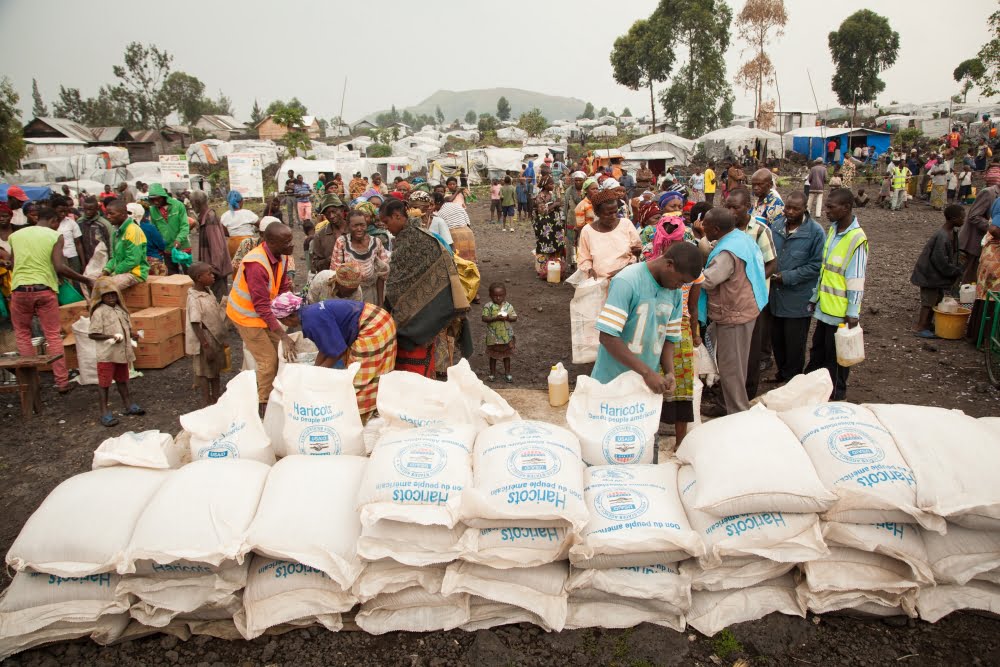Today’s map comes from a UN-entity known as the Integrated Food Security Phase Classification program. This is a group of food security and agricultural experts from the World Food Program and the Food and Agriculture Organization International identifies areas around the world that face acute food emergencies.
Today, they released a new report showing a surge in the number of food insecure people in the Democratic Republic of Congo.
Amid rising violence and displacement in the Democratic Republic of Congo (DRC), 7.7 million people face acute hunger – a 30 percent increase over the last year, the Food and Agriculture Organization of the United Nations (FAO) and the World Food Programme (WFP) warned today in a new report.
According to the Integrated Food Security Phase Classification (IPC) analysis released today, between June 2016 and June 2017, the number of people in “emergency” and “crisis” levels of food insecurity (IPC Phase 4 and 3) – which precede “famine” levels on the IPC scale – and requiring urgent humanitarian food assistance rose by 1.8 million, from 5.9 million to 7.7 million.
This means that more than one in ten people living in rural areas suffer from acute hunger.
Hunger is on the rise due to escalating and prolonged conflict and displacement in central and eastern DRC, mainly in the Kasaï and Tanganyika regions, where there has been widespread violence. Some 1.4 million people have been forced to flee their homes over the past year.
The report noted that the humanitarian situation has been exacerbated by the spread of fall armyworm infestations and cholera and measles outbreaks.
In conflict-ridden areas, over 1.5 million people are facing “emergency” levels of food insecurity (IPC Phase 4) according to the IPC report, which means people are forced to sell everything they have and skip or reduce their meals.
As you can see from this map, the most acute emergencies are in some specific areas of the country


The south central cluster of this map is a region known as Kasai. This has been the site of increased violence in recent months as local groups and the central government have clashed in an ever-escalating cycle of violence. As a consequence of this fighting food is growing more and more inaccessible. (To learn more about the crisis in Kasai — which is fast becoming Africa’s newest conflict hotspot — listen to my conversation with Human Rights Watch’s Ida Sawyer.)
Congo is now the site of yet another global food emergency.
These new figures are now on top of the already 20 million people in Yemen, Somalia, South Sudan and Northern Nigeria who are living in pre-famine conditions. For over a year now, the global humanitarian community has been trying to sound the alarm on the food crises in these places. Last month, a group of eight NGOs banded together in a rare joint appeal to raise money to fight these food crises, and just last week the Security Council held an emergency session, calling on countries to do more to mitigate the causes and consequences of these food emergencies.
Still, the as this new analysis shows the global food crisis is only getting worse. With several regions of Congo now falling into pre-famine conditions, the global food security crises seems to only get worse.
